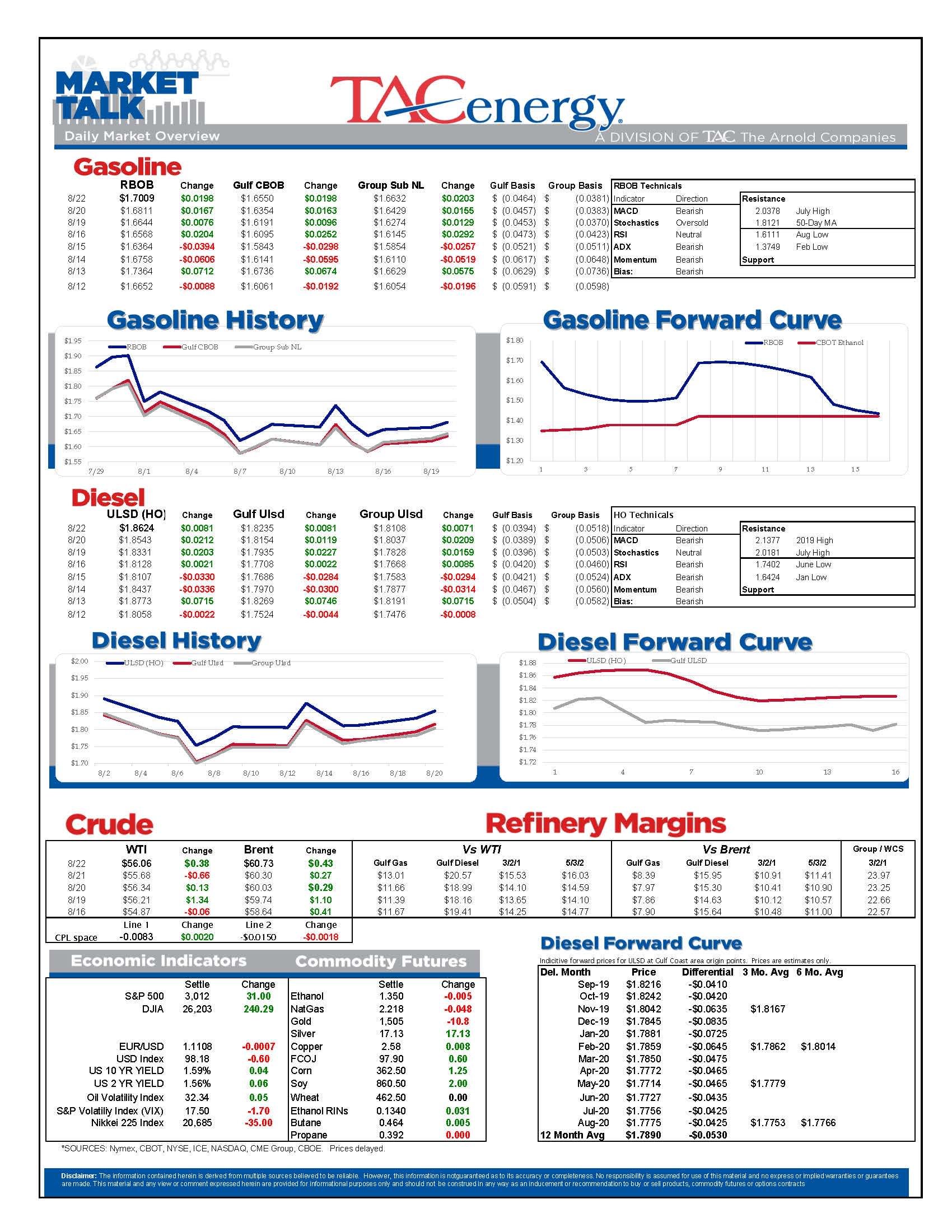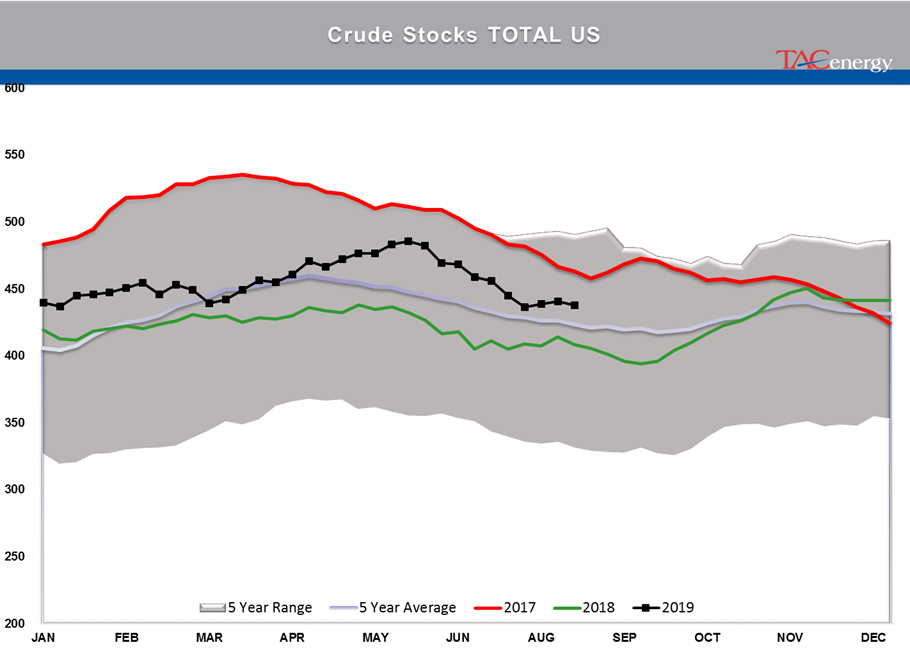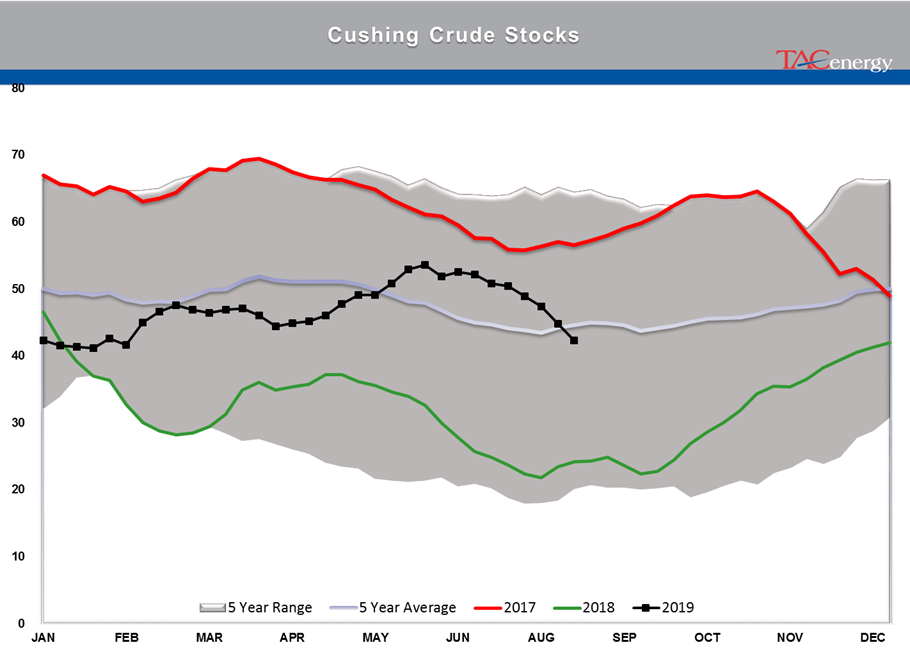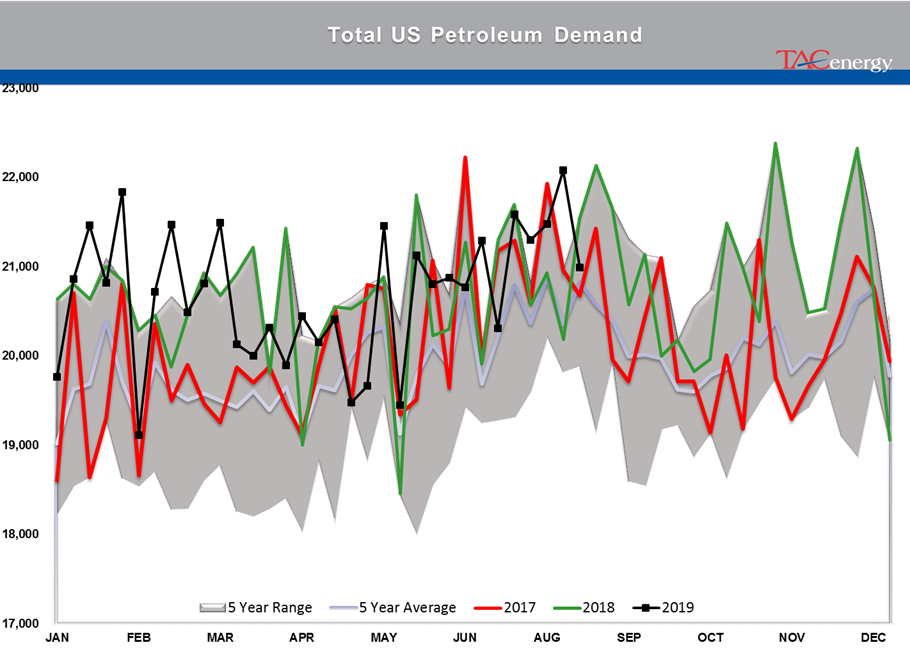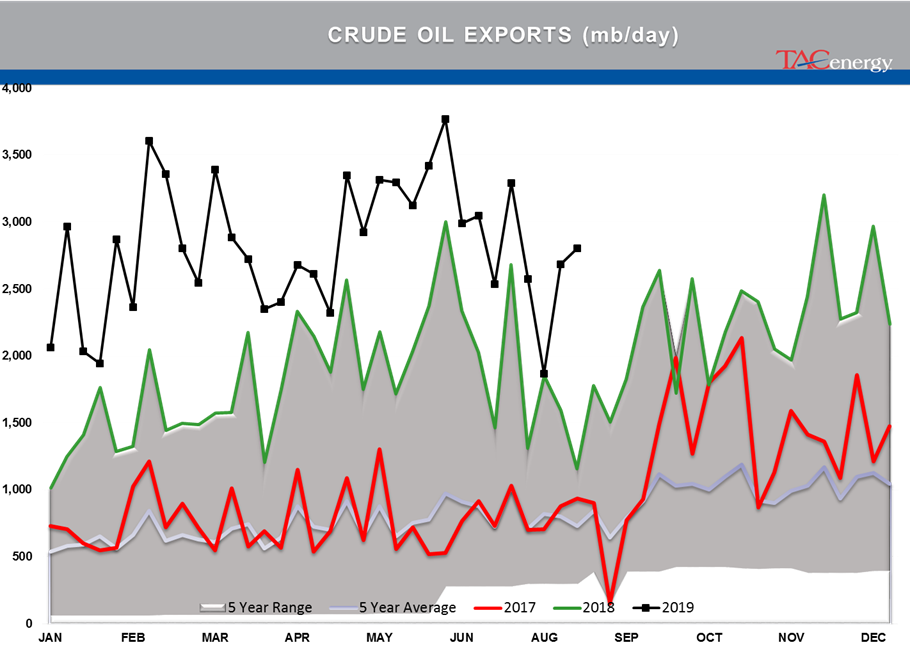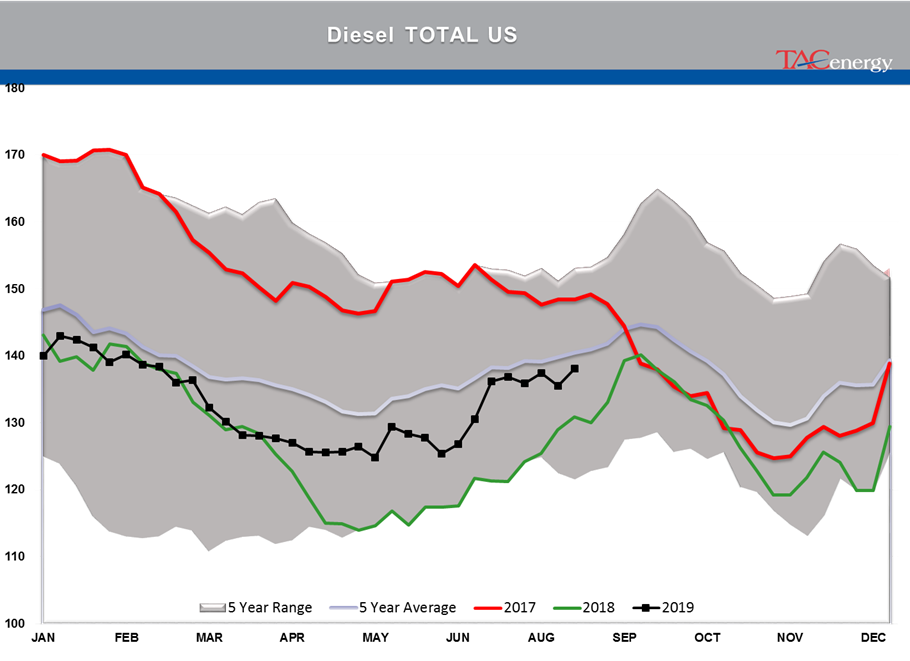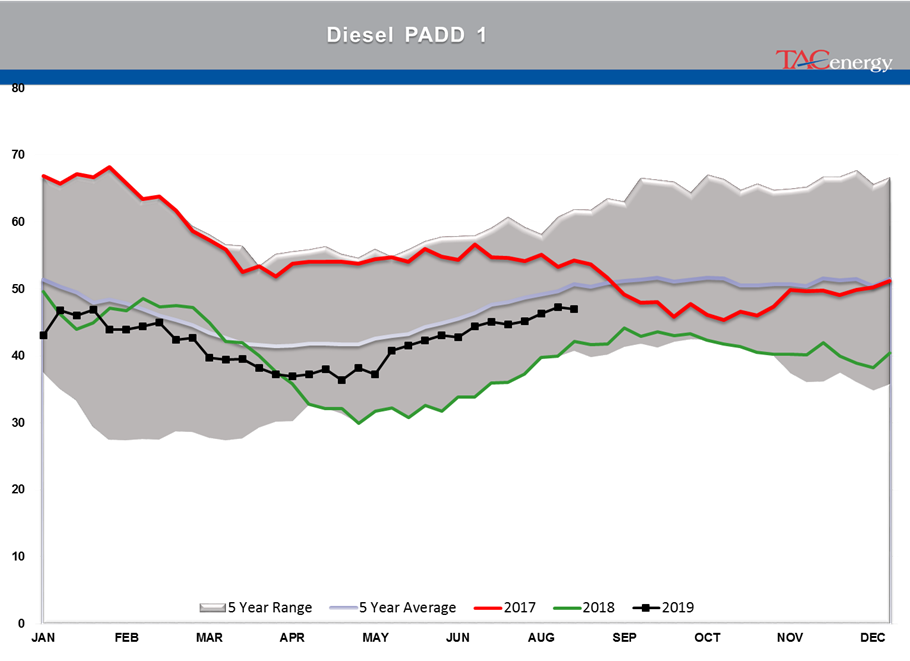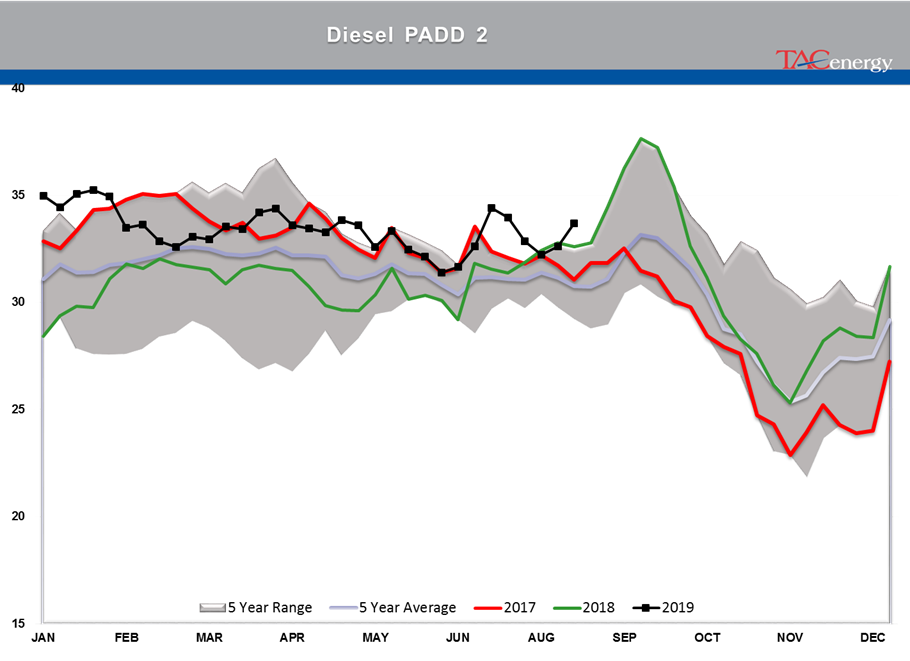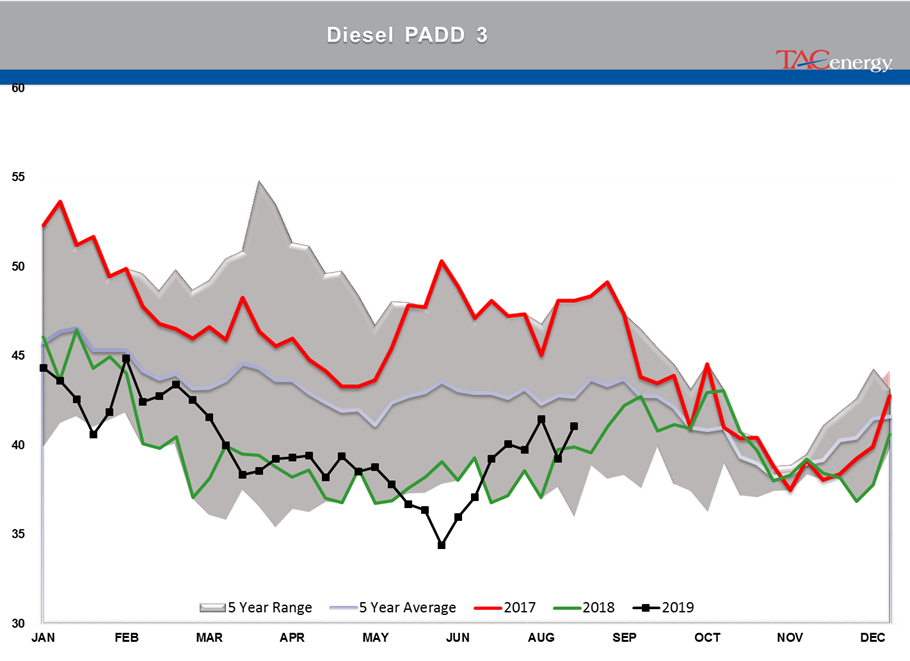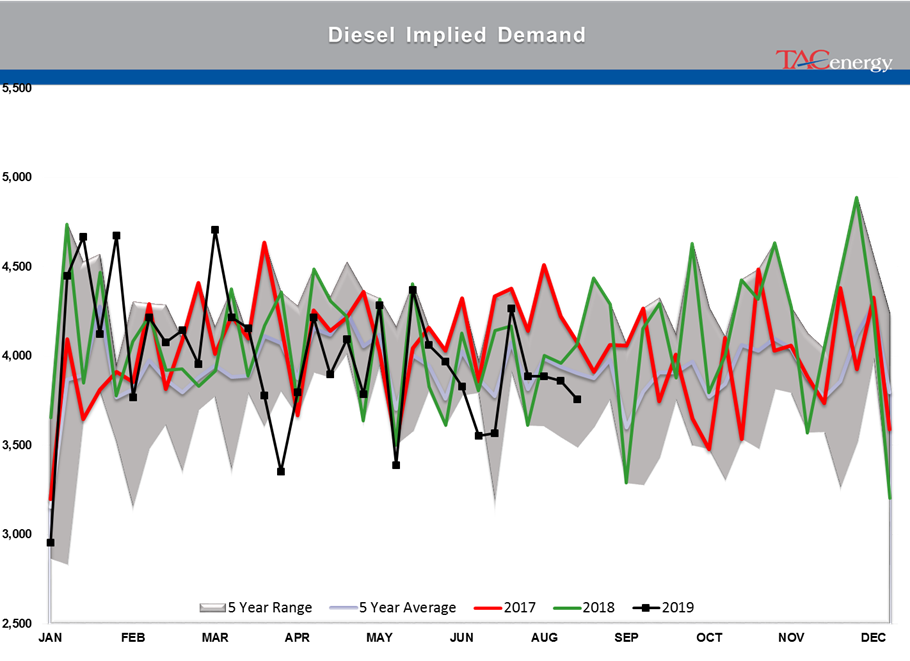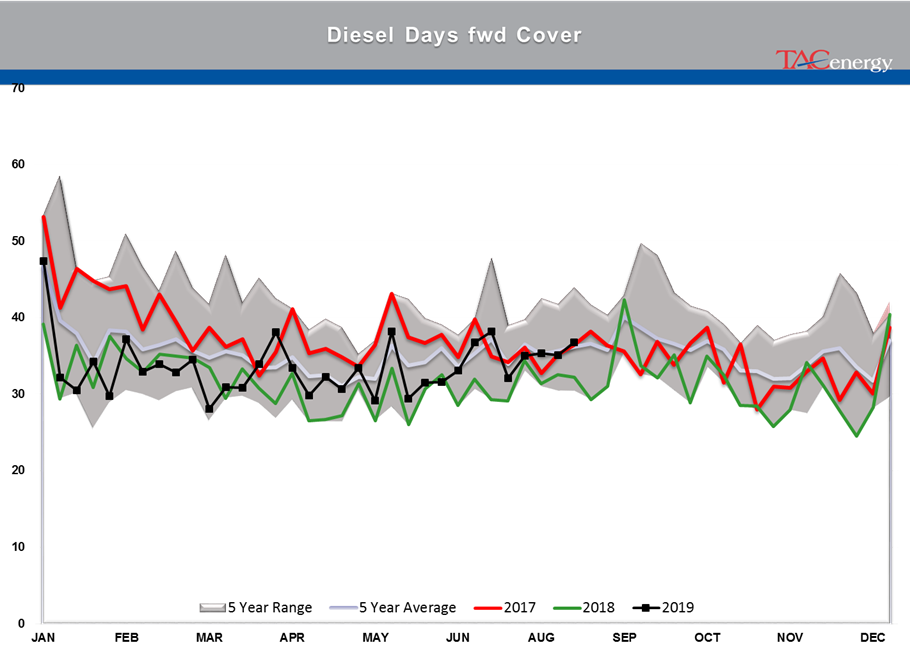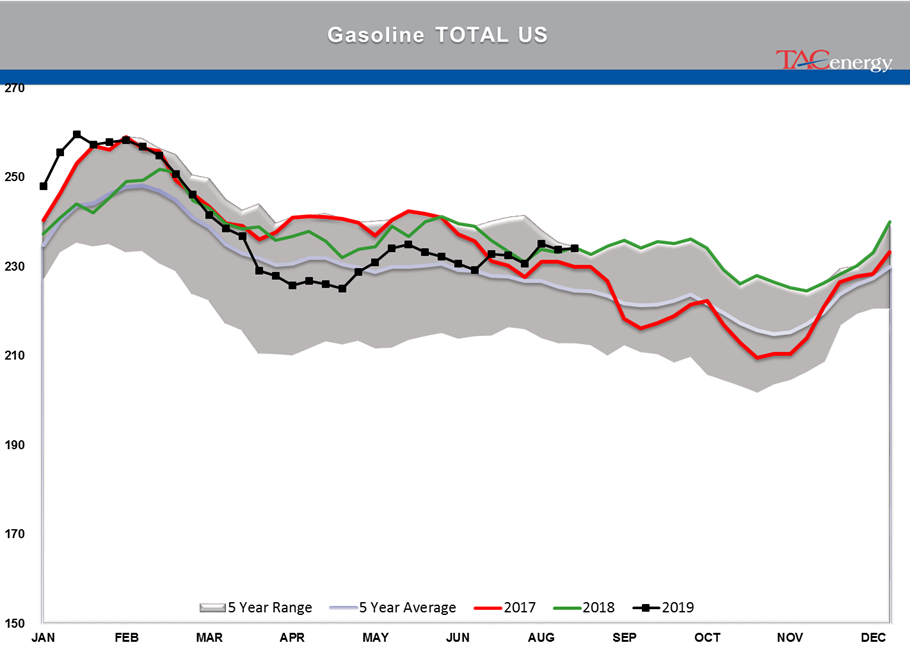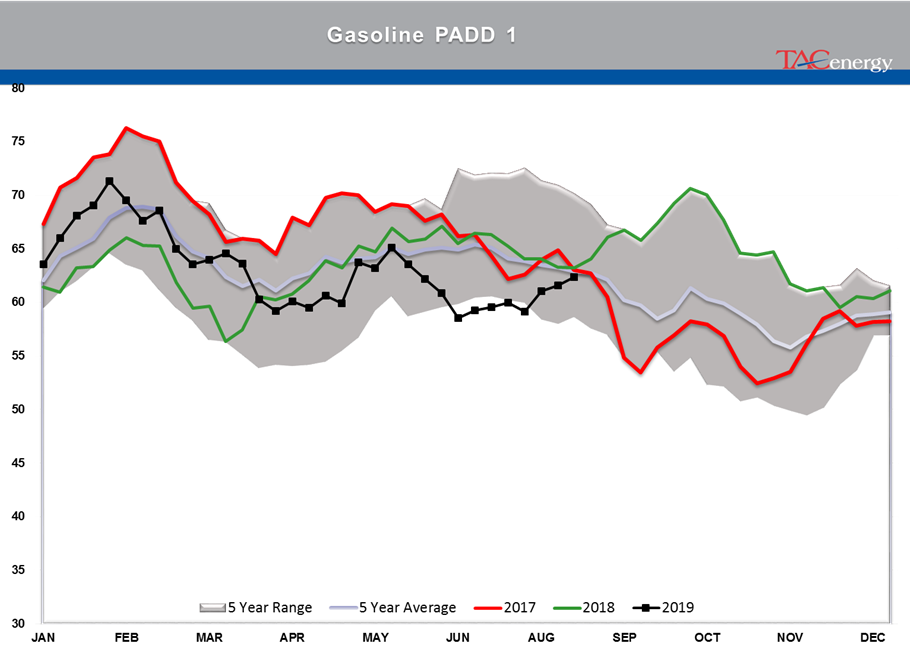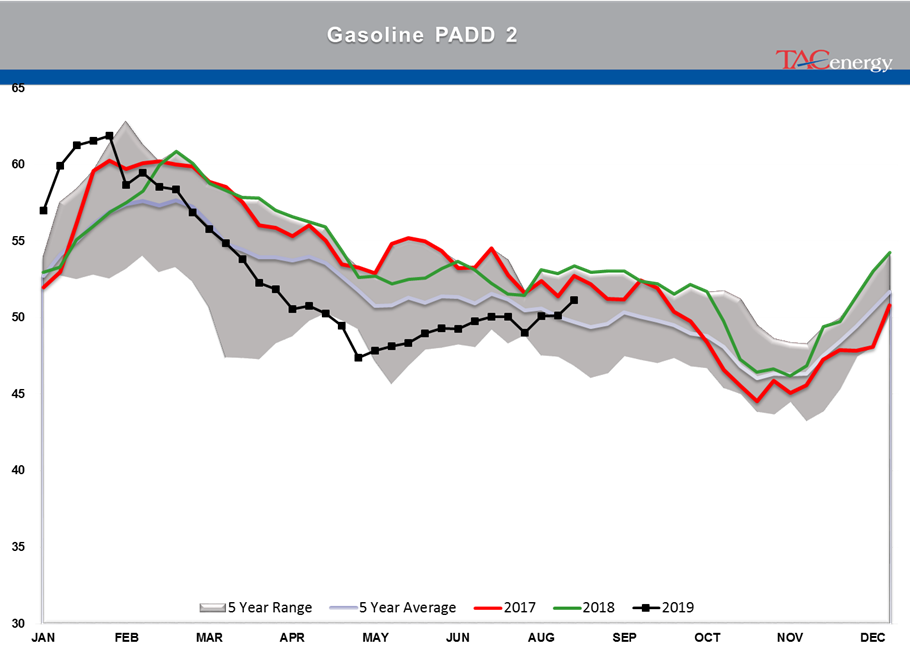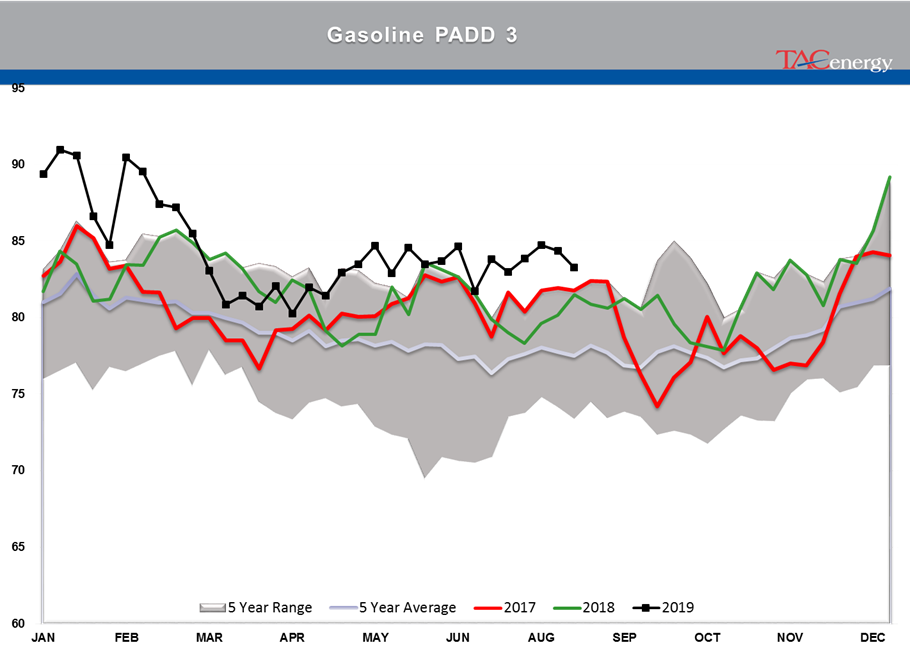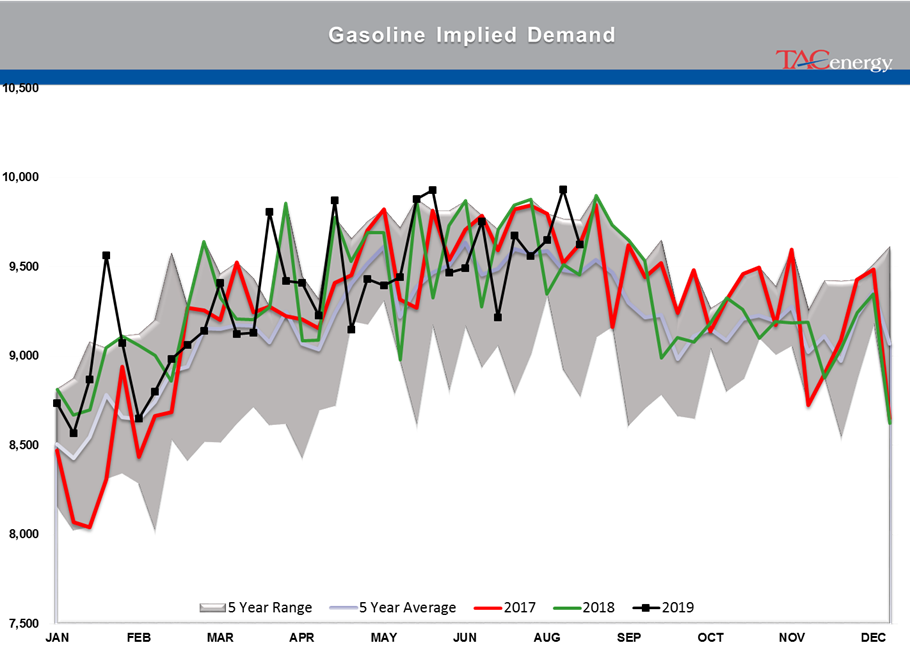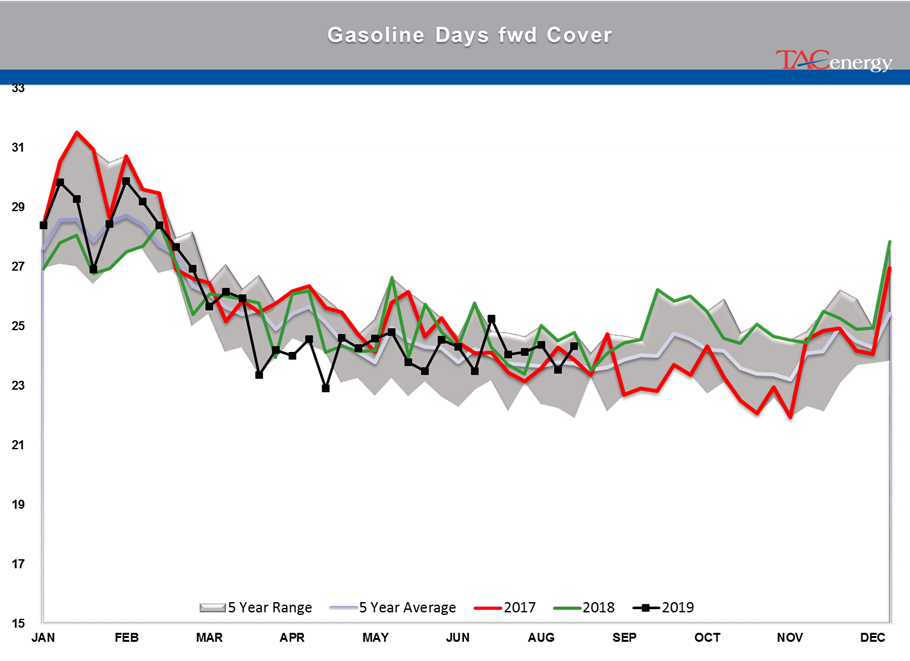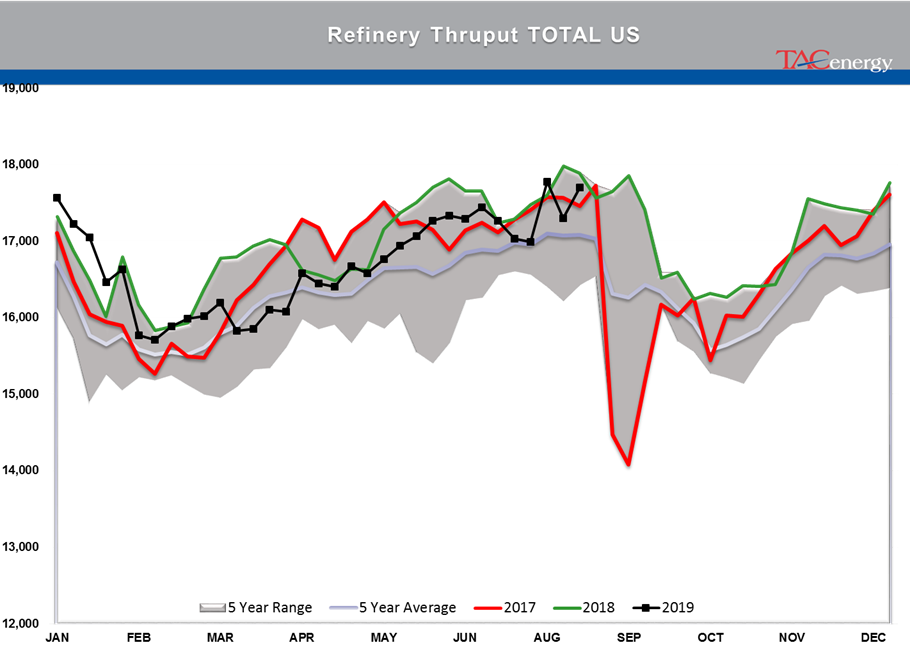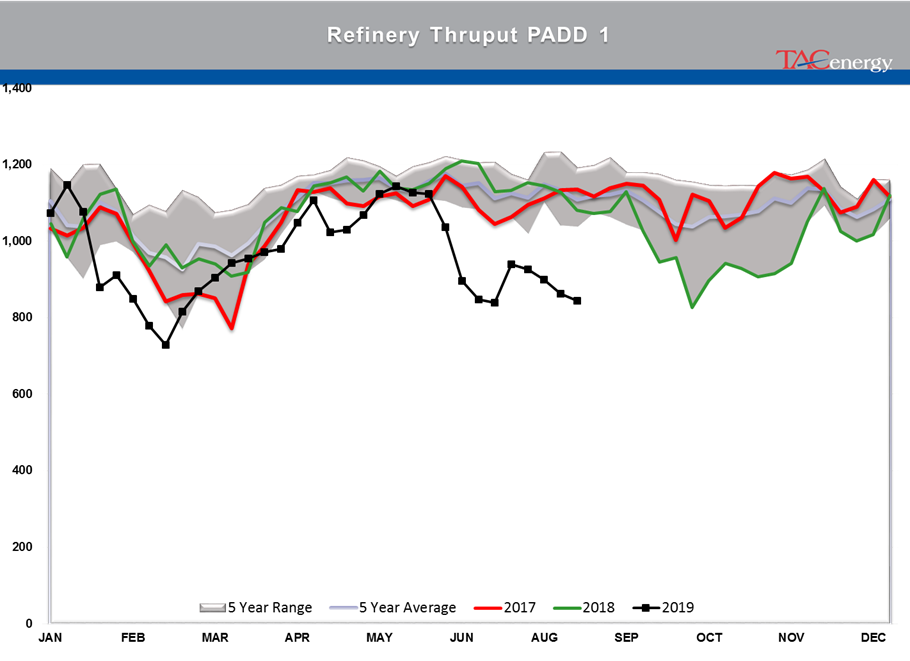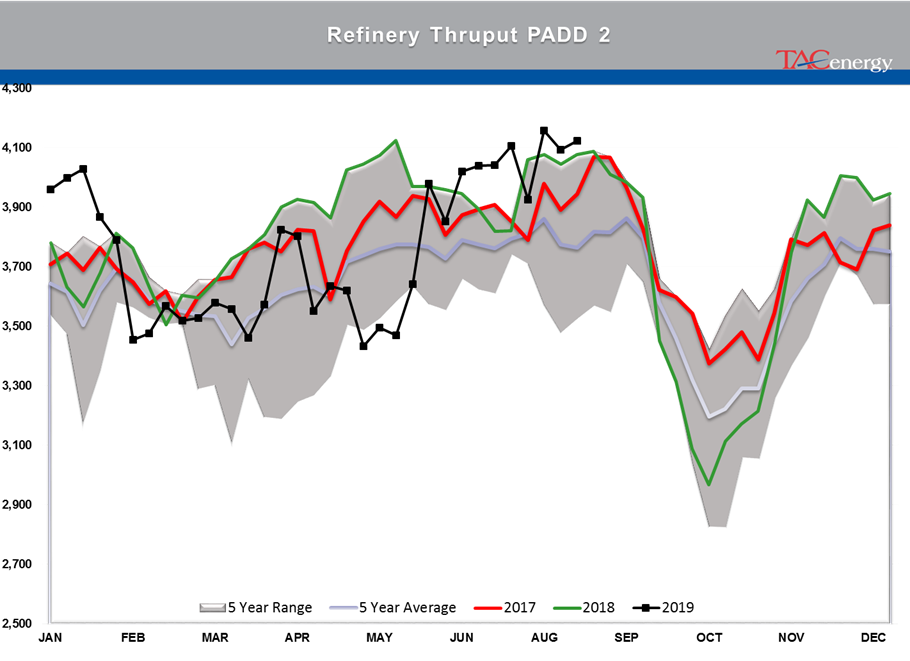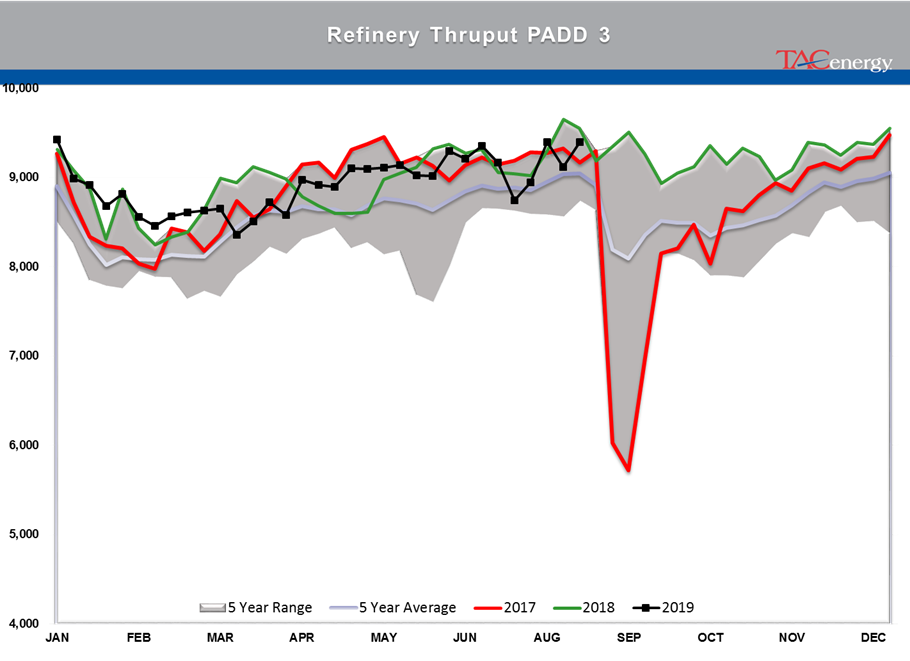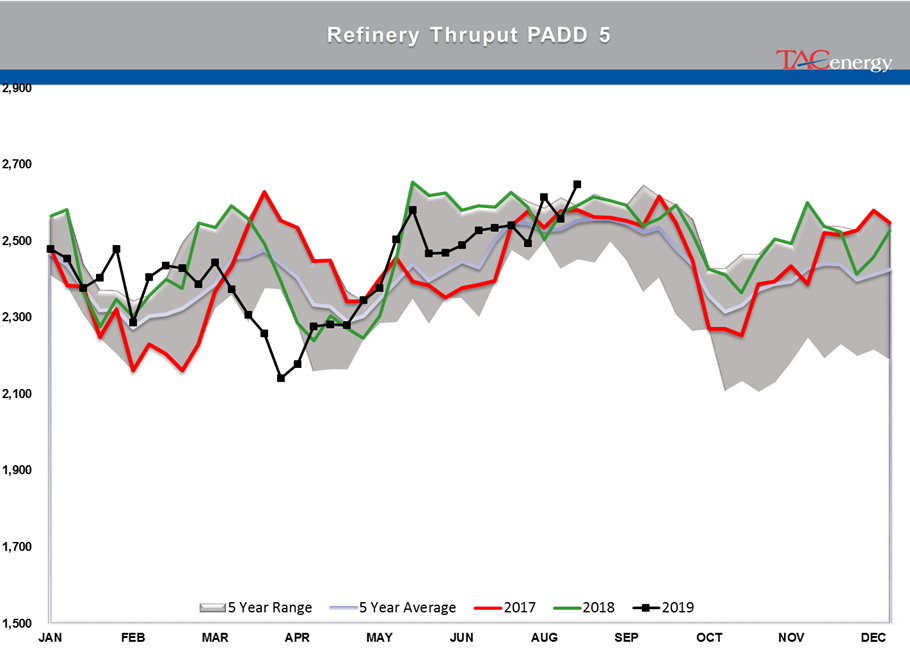Energy Complex Finished Mixed Yesterday

The energy complex finished mixed yesterday after a lackluster inventory report from the DOE. Crude oil stocks drew down just under 3 million barrels last week, about half a million barrels less than the API’s estimate. Diesel stocks rose over 2.5 million barrels and gasoline levels bumped by +300k barrels. Prices seemed to react the opposite as expected given the headline values with Crude oil losing about 50 cents on the day, RBOB and HO adding $.0127 and $.0030 per gallon respectively.
The Tanker Saga™ continues: after British forces in Gibraltar released an Iranian tanker earlier last week, reports had the transport headed to Syria via Greece, much to Washington’s chagrin. Military action seems to be halted as of now as Greece reports it will not help the tanker reach its intended destination, and ultimately assist the Iran Revolutionary Guard, easing tensions in the area.
Atlantic cyclone Chantal was downgraded to a tropical depression overnight and does not pose any threat of landfall at this time. While meteorologists only anticipate rough seas resulting from the latest named storm, attention now shifts to the Atlantic basin as a whole, ripe with warm water ready for tropical development, as we head into peak hurricane season.
If all the headlines about the persistence of an oil supply glut aren’t convincing enough, the Department of Energy announced yesterday that it will be selling 10 million barrels of crude oil out of the Strategic Petroleum Reserve by the end of August. While the liquidation is part of a mandatory sales program, set to sell 260 million barrels through 2027, the news seems to fall in line with multiple recent reports suggesting the world’s got too much oil going into 2020. It will be interesting to see how energy economics react, given its history of correction and even over-correction, as crude oil bulls (read OPEC), continue their push for higher prices. While that seems like a hopeless cause for the cartel, climate activists might lend an inadvertent hand in their cause.
Latest Posts
Week 17 - US DOE Inventory Recap
The Energy Complex Is Trading Modestly Lower So Far This Morning With WTI Crude Oil Futures Leading The Way
Energy Futures Are Drifting Quietly Higher This Morning
Refined Products Holding Close To Break Even While Oil Prices Are Losing Just Under 1%
Social Media
News & Views
View All
Week 17 - US DOE Inventory Recap

The Energy Complex Is Trading Modestly Lower So Far This Morning With WTI Crude Oil Futures Leading The Way
The energy complex is trading modestly lower so far this morning with WTI crude oil futures leading the way, exchanging hands $1.50 per barrel lower (-1.9%) than Tuesday’s settlement price. Gasoline and diesel futures are following suit, dropping .0390 and .0280 per gallon, respectively.
A surprise crude oil build (one that doesn’t include any changes to the SPR) as reported by the American Petroleum Institute late Tuesday is taking credit for the bearish trading seen this morning. The Institute estimated an increase in crude inventories of ~5 million barrels and drop in both refined product stocks of 1.5-2.2 million barrels for the week ending April 26. The Department of Energy’s official report is due out at it’s regular time (9:30 CDT) this morning.
The Senate Budget Committee is scheduled to hold a hearing at 9:00 AM EST this morning regarding a years-long probe into climate change messaging from big oil companies. Following a 3-year investigation, Senate and House Democrats released their final report yesterday alleging major oil companies have internally recognized the impacts of fossil fuels on the climate since as far back as the 1960s, while privately lobbying against climate legislation and publicly presenting a narrative that undermines a connection between the two. Whether this will have a tangible effect on policy or is just the latest announcement in an election-yeardeluge is yet to be seen.
Speaking of deluge, another drone attack was launched against Russian infrastructure earlier this morning, causing an explosion and subsequent fire at Rosneft’s Ryazan refinery. While likely a response to the five killed from Russian missile strikes in Odesa and Kharkiv, Kyiv has yet to officially claim responsibility for the attack that successfully struck state infrastructure just 130 miles from Moscow.
The crude oil bears are on a tear this past week, blowing past WTI’s 5 and 10 day moving averages on Monday and opening below it’s 50-day MA this morning. The $80 level is likely a key resistance level, below which the path is open for the American oil benchmark to drop to the $75 level in short order.
Click here to download a PDF of today's TACenergy Market Talk.

Energy Futures Are Drifting Quietly Higher This Morning
Energy futures are drifting quietly higher this morning as a new round of hostage negotiations between Israel and Hamas seem to show relative promise. It seems the market is focusing on the prospect of cooler heads prevailing, rather than the pervasive rocket/drone exchanges, the latest of which took place over Israel’s northern border.
A warmer-than-expected winter depressed diesel demand and, likewise, distillate refinery margins, which has dropped to its lowest level since the beginning of 2022. The ULSD forward curve has shifted into contango (carry) over the past month as traders seek to store their diesel inventories and hope for a pickup in demand, domestic or otherwise.
The DOE announced it had continued rebuilding it’s Strategic Petroleum Reserve this month, noting the addition of 2.3 million barrels of crude so far in April. Depending on what the private sector reported for last week, Wednesday’s DOE report may put current national crude oil inventories (include those of the SPR) above the year’s previous levels, something we haven’t seen since April of 2022, two months after Ukraine war began.
The latest in the Dangote Refinery Saga: Credit stall-out, rising oil prices, and currency exchange.
Click here to download a PDF of today's TACenergy Market Talk.

